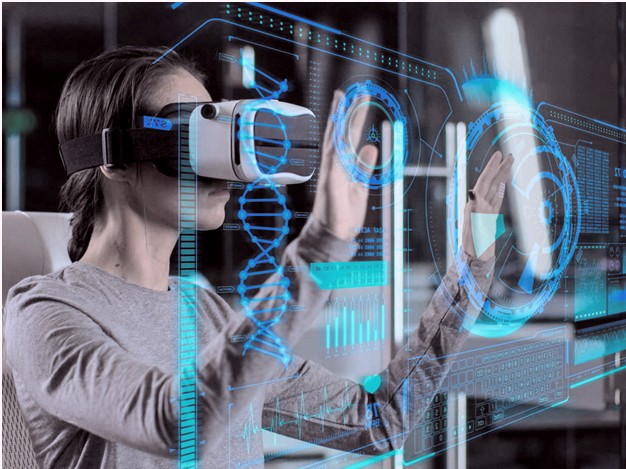What is VR / AR?
In the world of emerging technology, some new trends are almost invisible, enabling new applications while working behind the scenes. Virtual reality and augmented reality are not such trends. While VR and AR are literally in front of the end user’s eyes, and with some obvious consumer applications, businesses don’t always see how they can exploit potential.
What is virtual reality?
Virtual reality is more common among the two trends, but in business, it may have more limited possibilities. Most people are familiar with VR from the video game industry, where it has been evolving for many years. The main component of a VR system is some kind of headset that completely occupies the field of view of the user, providing an immersive experience. More advanced VR systems provide audio immersion. Extremely high resolution, and positional tracking that allow users to use their hands to navigate and interact with the virtual environment.
Starting from a smartphone inserted into a simple cardboard IPS to a self-contained headset that connects to a powerful computer that does most of the processing. Regardless of the equipment involved, there is significant friction for the end user in setting up and using the technology.
In light of this friction, businesses need to think carefully about where they want to apply VR. Conferencing is a potential solution. But the benefits of a VR conference need to be weighed against the cost and usability of the equipment. There are more possibilities for training, but again a big investment will have to be made in the VR training program. For some companies, the return will be worth the investment, but VR can be difficult to accept widely.
What is augmented reality?
Augmented reality is much less immersive than virtual reality. In AR, any type of device moves between the user and the physical environment, and information can be displayed while the user still has a normal view of their surroundings. Today, this is usually done with a smartphone or wearable such as the early Google Glass test or Microsoft’s Hololens. Going forward, the technology can be incorporated into everyday glasses, building windows, or devices customized to specific situations.
At the front end, the equipment required for AR is less complex. At the back end, though, things get more complicated. Rendering a high-resolution virtual environment requires heavy processing for VR, AR requires image recognition to analyze the physical environment, network management for data transmission depending on real-time needs, and a database of information that may be displayed.
However, the simplification of the front edge and the use of the surrounding environment leads to a wider range of possibilities for business. Providing additional information to the end user can add value in a variety of situations. Local information for tourists, equipment specifications for repair technicians. Virtual furnishing for interior designers are just some of the ways AR is being used today.
Moving forward with VR / AR
Since companies consider any venture in mixed reality (umbrella term applied to any combination of VR and AR), they must recognize that, like many emerging technologies. The best strategy is not to look for ways to develop existing technology. It is to imagine brand new applications that could use new technologies. “Where can we fit in VR / AR?” Instead of asking, it’s best to start with business goals and work together to integrate new trends.
Outside of conferencing, most current VR / AR applications are activities that had no IT pioneer. Instead, these activities serve a business purpose. Such as enhancing the customer experience or expanding the corporate brand definition. The IT team is responsible for creating appropriate technology models. This approach is different from the one used in IT, but it is becoming the standard for digital companies.
After jointly determining an idea for a new application, IT will certainly help their business counterparts understand the total cost of the system. In the case of AR, in particular, it goes beyond the user’s device and the accompanying software application. Back-end components are needed and these components need to be integrated into existing business processes with existing IT architectures. There are also social effects to consider. Which may prevent any awkwardness in using the system initially.
VR and AR represent exciting new interfaces and exciting new applications. But a business must overcome many obstacles to successfully implement this emerging technology. By learning about all the components, starting with a business need, and collaborating with business units. IT professionals can help make the right choices around this new trend.
How do AR and VR work together?
It would be a mistake to assume that augmented reality and virtual reality are intended to work separately. When these technologies are combined to bring the user into the imaginary world, giving a new dimension to the interaction between the real and the virtual world. They merge together to create an enhanced engaging experience.




